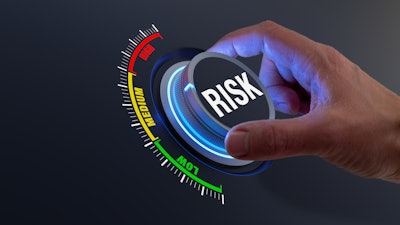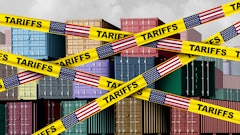
From tariff woes and geopolitical instability to strict data privacy regulations and cyberattacks, supply chains are being tested more and more each year. Now, enterprises managing third-party relationships are forced to confront a daunting truth: one weak link in a supplier ecosystem is a risk to the entire enterprise.
As enterprises struggle to gain clear visibility and control over their supplier relationships, the need for a more integrated approach to third-party risk management is glaring. Ensuring supply chain integrity requires a real-time, end-to-end view of supplier risk, compliance, and performance across the full supplier lifecycle.
Unfortunately, many organizations operate in silos, lacking the tools and visibility to manage supplier relationships with confidence. Risk review and approval alone can span 8-10 functional groups, making collaboration and alignment even more challenging. The challenge isn’t just about onboarding suppliers or monitoring contracts, it’s about managing the complex security risks inherent to these relationships while overcoming organizational silos and fragmented data, not just once, but continuously. Traditional, one-size-fits-all approaches to supplier risk, typically centered around point-in-time questionnaires or spreadsheet tracking, are no longer enough.
CPOs, CISOs, and supply chain leaders must ask themselves: “Does my enterprise’s left hand know what the right is doing?” If the answer is a resounding no, it’s time for them to reframe their third-party risk management strategy.
When suppliers become the enterprise attack surface
Supplier management has evolved beyond a simple transactional process. It now spans the entire supplier lifecycle, including everything from onboarding and risk assessment to ongoing performance monitoring and compliance management. Enterprise leaders must also tackle an increasingly diverse supplier ecosystem that includes direct suppliers, sub-tier vendors, service providers, and technology partners.
And these are just the tablestakes. On top of managing a complex supplier ecosystem, cybersecurity threats continue to escalate as third-party vendors become prime targets for cybercriminals. Attackers exploit gaps in third-party security as entry points into broader enterprise networks, with over 30% of data breaches involving third parties, double the amount of the year prior.
Third-party vendors represent a large slice of the enterprise cyber risk pie, but many organizations still fail to evaluate or monitor vendor cyber exposure at scale. In addition to data breaches, operational disruptions caused by supplier failures, insufficient access controls leading to unauthorized system or data access, and non-compliance with regulatory requirements such as GDPR or industry-specific mandates are major risks. Effectively managing these issues requires more than just basic due diligence. It requires organizations to evaluate their supplier security strategy in real-time.
Fragmented systems and weak links in supplier visibility
While organizations seem to recognize the magnitude of supplier risks, reliance on siloed teams and fragmented tools tell a different story. Currently, 64% of procurement executives use 10 or more procurement tools, yet this multi-tool environment often leads to fragmented master data, duplicate records, poor visibility, compliance gaps, and missed opportunities to optimize supplier performance. At the same time, procurement, IT security, compliance, and finance teams often maintain separate systems and inconsistent data formats, resulting in multiple conflicting views of the same supplier.
This disconnect creates operational challenges like onboarding delays, manual reconciliation and duplicated efforts across platforms, and compliance gaps when critical policy updates are not updated in real time. The most concerning consequence? Disjointed practices limit visibility into sub-tier suppliers, which are usually the culprits behind the most significant yet hidden risks to enterprise security.
Procurement teams continue to rely heavily on Tier 1 relationships for supplier risk insights, but the most significant vulnerabilities often hide further down the chain. In fact, up to 85% of critical supply chain disruptions originate with suppliers below the first tier, where oversight and accountability are weakest. There may even be instances of suppliers that operate in regions with weak regulatory enforcement, lax labor and environmental oversight, and limited cybersecurity precautions, all of which can turn into operational risks for the enterprise. Without visibility into these relationships, enterprises are blind to a critical layer of risk that can disrupt operations, compromise sensitive data, and undermine compliance obligations. With Tier 2, Tier 3 and Tier 4 suppliers now accounting for the majority of disruptions, enterprises cannot afford to view supplier risk management through a narrow, first-tier lens.
Building confidence through integrated supplier management
To overcome these challenges and better manage third-party relationships, enterprises need to merge supplier data and align cross-functional teams around a shared risk approach. At its core, supplier management has to evolve from an ad-hoc, fragmented, compliance-driven process into a continuous enterprise-wide initiative that balances efficiency, resilience, and security. That means building processes that support real-time risk assessment and monitoring, stronger collaboration between functions, and deeper end-to-end visibility into the extended supplier ecosystem.
Third-party management is not about eliminating risk altogether (an impossible task in today’s global economy), but about building the ability to identify, evaluate, and respond to risks faster than they can turn into disruptions. Consolidating supplier information into a single, reliable source of truth, automating risk assessments where possible, and allowing cross-functional teams to act on shared insights creates the foundation for more confident decision-making (both human and machine based). By extending that visibility into sub-tier suppliers, enterprises gain the awareness to address vulnerabilities where they start.
Supplier risk management has become a core pillar of third-party management strategy. Enterprises that treat it as an ongoing strategic capability rather than a transactional relationship will be better prepared to withstand cyberattacks, regulatory shifts, and global disruptions. It’s clear that true resilience doesn’t start at the edge of the enterprise, but at the very foundation of the supplier network. The organizations that keep this top of mind, not just once, but in real-time, will be the ones most capable of protecting against third-party risks and creating a future-proof supplier ecosystem.


















